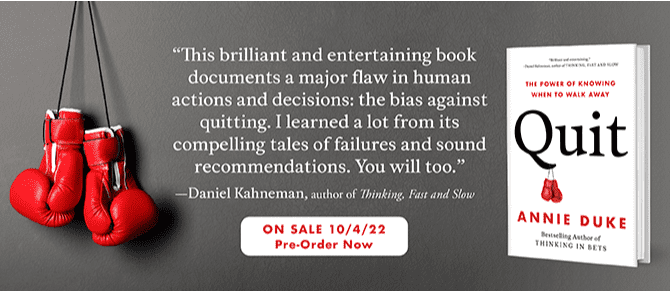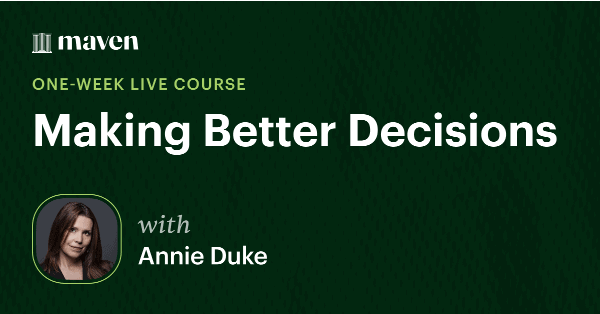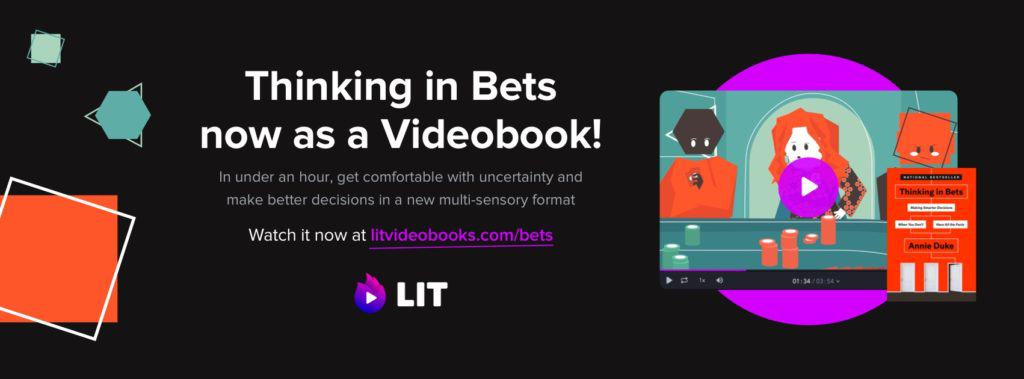Wednesday May 11, 2022 E-Newsletter

UNDER NEW MANAGEMENT:
Decision-making takeaways and lessons from the surprising shutdown of CNN+
On April 21, newly formed media giant Warner Bros. Discovery (WBD) “stunned the media and tech worlds” by announcing that it was shutting down its new streaming subscription news service, CNN+, at the end of the month.
The service had launched on March 29 – just 3 weeks before the announcement.
Since the previous July, CNN had hailed the project as the biggest development at the company in 40 years. Jason Kilar, CEO of WarnerMedia, of which CNN was a subsidiary, tweeted, “It would be hard to overstate how important this moment is for CNN.”
WarnerMedia spent an estimated $300 million on CNN+’s development and launch and hired hundreds of new employees, including big-name talent like Chris Wallace (Fox News), Kasie Hunt (NBC), and Audie Cornish (NPR). WBD’s decision to terminate such a big, public commitment after just a month is almost unheard of.
Those resources, based on leaked information reported by Axios.com, were just the initial part of a plan to spend $1 billion on CNN+ over the next 4 years, which was how long CNN had forecasted it would take to grow to 15-18 million subscribers and reach break-even.
CNN+ was the perfect set up for management to fall prey to the sunk cost fallacy, first identified as a general phenomenon in 1980 by Richard Thaler, who went on to win the Nobel Prize in economics.
The sunk cost effect describes the bias where once you have made the decision to start an endeavor, the resources you have already spent on the project make it difficult to give up and cut your losses. We have this fear that if we don’t keep going, we’ll have wasted the resources that we’ve already sunk into it and, if we quit, we will never be able to recover them.
When so much money, time, and effort have already been spent on a project, that’s exactly when it becomes so hard to walk away.
So why was WBD able shut CNN+ down, despite the massive resources sunk into the endeavor?
A good guess is exactly because they were under new management.
When it comes to decisions about when to cut your losses, it turns out that if you’re fresh to the decision, if you didn’t make the original choice to start, it’s easier for you to make a more rational decision about when to stop.
We all have the strong intuition that when we learn new information that the path we have chosen is not going as we had hoped, we will abandon the cause. Yet the science says the opposite is true.
In the face of bad news, we escalate commitment to the thing we have started, doubling down on the failing path.
Unless you are fresh to the decision.
If you aren’t the one who made the choice to start, it is easier for you to stop when the news is bad.
AT&T owned WarnerMedia when it approved CNN going forward with the expensive new project. At that same time, it had already agreed to sell 29% of the WarnerMedia to Discovery and spin off the remainder to AT&T shareholders. Discovery’s longtime CEO David Zaslav and his management team would be in charge of the combined company.
The length of time it would take for the merger’s regulatory and shareholder approvals meant that the people deciding the fate of CNN+ would not be the same as the people who made the decision to develop or launch it.
The new management took over the combined company on April 8, just a week after the premier. One of their first tasks was evaluating the initial data from the launch of CNN+.
The new WBD management saw that data as immediately and overwhelmingly negative.
According to CNBC.com, “fewer than 10,000 people are using CNN+ on a daily basis two weeks into its existence.” Another CNBC.com report claimed, “that number was actually closer to 4,000.”
The numbers were obviously dismal, suggesting that all the money spent so far on marketing and content – the expensive marketing campaign, the effort by hundreds of new employees, and all that name-brand talent – led to almost nobody wanting to stick around to watch.
According to an account in the New York Times, on April 14, CEO David Zaslav met with his top executives, and they agreed it was time to cease operations of CNN+, because it “was eating up too many resources, and that its potential as a digital destination could not justify its tiny audience and enormous cost.”
When the decision was made to abandon CNN+, you could hear the loud drumbeat of the sunk cost fallacy creeping into so many popular takes by commentators and pundits: How could they give up so quickly and render all that money and effort a waste?
The problem, of course, is that what really matters about whether to move forward is whether the new resources you will have to keep sinking into the endeavor are worthwhile. You don’t want to throw proverbial good money after bad. But that is exactly what we have a tendency to do in trying to avoid that feeling of waste.
If outside observers were so unduly swayed by the expenditure of past resources, imagine the potential for the people responsible for expending those resources to be unduly swayed.
We don’t have to imagine.
CNBC.com’s story after the shutdown reported that “WarnerMedia executives were actually excited about the start.” Andrew Morse, CNN’s head of global digital business who eventually became CNN+’s chief, told WBD at the April 11 meeting that CNN+ had 150,000 subscribers in its first 2 weeks and was on target for its first-year goal of 2 million.
The gap between how WBD and CNN’s remaining management viewed those numbers aligns with what more than four decades of research tells us about how our prior commitment to a belief or course of action affects how we interpret new information.
The influence of past costs and commitments is pervasive and very hard to overcome. So when you know that a decision-maker considering quitting wasn’t responsible for the initial decision or the costs already incurred, you can also bet they are going to be better at making decisions about when to cut their losses.


If you want to be the first to know more about this course, sign up here: https://wk-gb.typeform.com/annie-duke

Watch it now at litvideobooks.com/bets
Alliance for Decision Education Fellowship Grows: Share With Teachers You Know

Through the year-long program, teachers will build their own decision-making skills, collaborate to create compelling lesson plans, and work with the Alliance to measure results in the classroom. This year, the Alliance will offer two Fellowship Levels, one for new teachers and a second, advanced level for previous Fellows looking to increase their understanding, engagement, and teaching skills. Each Fellow will receive a $5,000 stipend for their participation and contribution to our learning. Applicants will be accepted through June 10. Please encourage teachers you know to apply.
In case you missed it:
Forbes, May 4, 2022
Why A Great Result Isn’t Always A Great Decision
Backcountry Magazine, May 5, 2022
Talking Risk: How to Better Understand and Communicate about Uncertainty
Alliance for Decision Education Podcast
Season 3 — Episode 015: Temptation Bundling and Behavior Change with Dr. Katy Milkman

